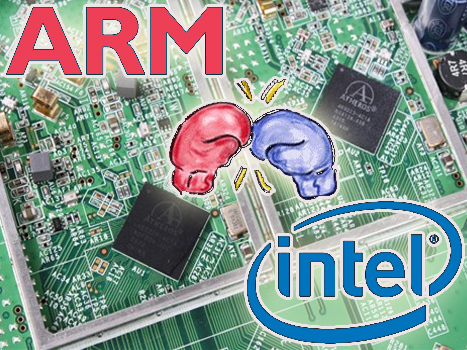Arm held an analyst briefing last week in which they shared some details about new features coming to their ARM for their platform. While they often communicate with analysts just before they announce a new product, this was the first time in history they showed us a roadmap for the Arm core and detailed its evolutionary path through 2023.
The fact that they laid out a roadmap is a big deal. A few years back I went to meet with Arm officials in Cambridge, the UK which is where their headquarters are located. At the time, I tried to get them to open up about their future designs, but they always kept that very close to the vest. Over the years they seemed to get even more secretive. At the same time, they made huge strides with the Arm core and made it more powerful yet less power hungry.
Last week’s reveal of a longer-term roadmap suggests to me that Arm has had a significant breakthrough in their overall design, something that makes them secure in stating that they believe they can now take on Intel head to head in the PC market with an Arm processor that can compete with most Core i5’s from Intel. More importantly, their goal is to take at least 10% of the PC market by 2022-2023 time frame.
A lot of analysts and media got a glimpse of this last Dec when Qualcomm showed off their always-connected PC program using the Snapdragon 835 processor. Along with Microsoft, who worked with Qualcomm to create a version of Windows 10S that works well on a non-Intel chip, the two companies have been working with vendors to develop more laptops based on Arm processors. This move by Microsoft to support Arm is a strategic one. Sources tell me that Microsoft is committed to processor diversity and no longer will support only Intel chips. I suspect this means that Microsoft will also be more vocal on supporting AMD’s Ryzen processors too.
One of the reasons I think Qualcomm is so committed to getting into the PC business along with Arm is that they see Intel as being vulnerable. Intel is still years away from getting to 7nm processes, while Arm showed in the roadmap that they, along with their partner fabs, are moving quite fast to 7nm and will be using 5 nm processes by 2021-2022.
Of course, the PC business is not as lucrative as it was ten years ago, but laptops will still be an essential product well into the next decade. Even if we stay constant at 250-275 million PC’s sold each year going forward, there is money to be made in PCs.
However, there is another form factor that I think is very attractive to Arm, Qualcomm, and Microsoft and that will come from many dual screen styled portable computers next year. I believe dual screen laptops will be the 2 in 1’s of the next decade and there will be a lot of room for innovation with this new design. More importantly, since this form factor can also double as a tablet in some instances, a lower powered processor will be critical to its design. Low powered chips are where an Arm-based processor could be significant.
If you have a dual screen system that genuinely doubles as a laptop and a tablet, battery life becomes even more critical. While Intel is trying to get their processors to be more power efficient, I don’t think they can match Arm. Arm, with their partners, will be using 7nm and 5nm processes years before Intel can and this should keep the Arm world ahead of Intel for at least another five years if not more, at least where it comes to lower powered processors.
In the mid-1990’s, I was invited to participate on a ship cruising the English Channel that held a major conference for the tech industry of the UK. During this event, I got to spend time with someone the significant players in UK tech such as Sir Clive Sinclair, who created one of the first portable computers, and Dr. Herman Hauser, a Co-Founder of Arm Ltd. At dinner with Dr. Houser, we got to talking about the future of the PC industry, and I asked him what role he thought Arm could play. At the time, Arm chips were mostly used as embedded processor and controllers and use as a PC chip was not even in their thinking.
Always considered an out-of-the-box thinker, as well as quite a character, Dr. Hauser told me that he did envision a day when an Arm processor could power a PC. While I had a hard time imagining an Arm chip in a PC at that time, it looks now like his vision is starting to come true. While I do see many challenges ahead when it comes to Arm gaining much ground in the PC market, I do think a goal of 10% by 2022-23 is achievable and if Intel continues to flounder, their share could be even more prominent by then.

We always follow your beautiful content, I look forward to the continuation.